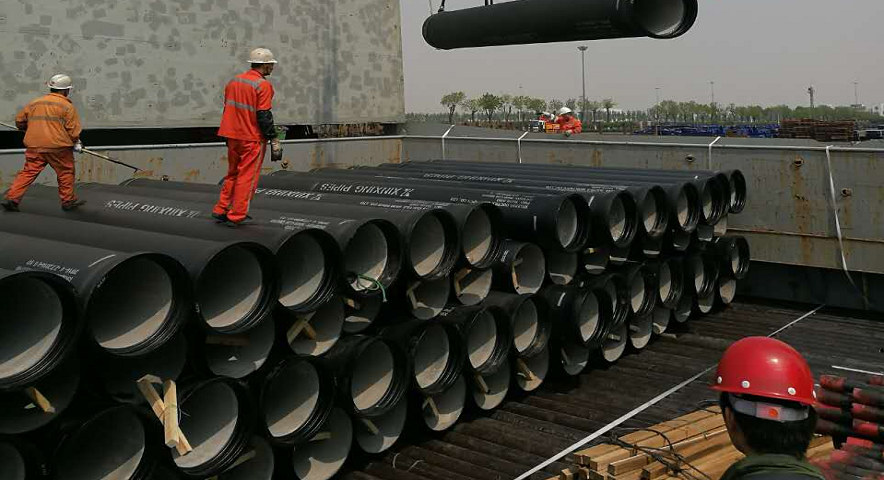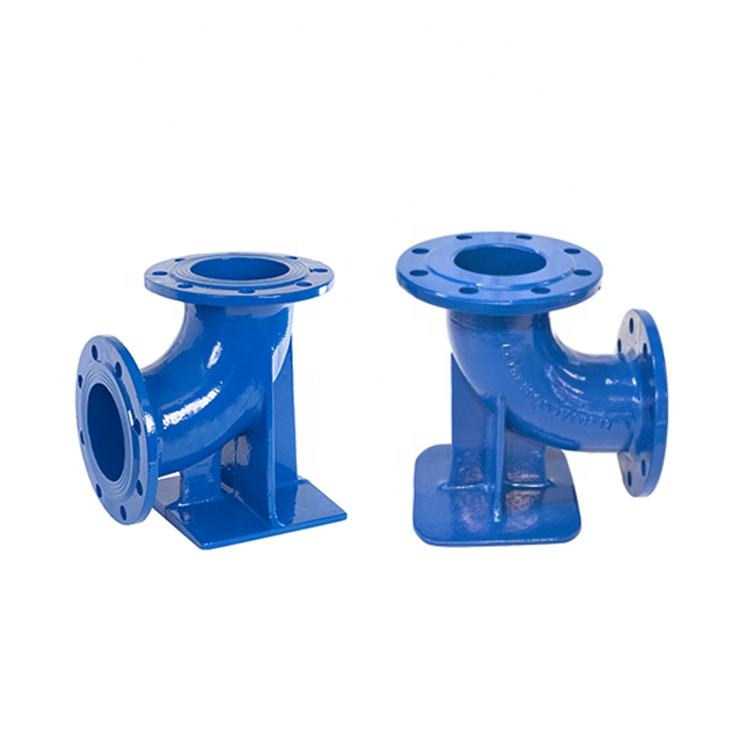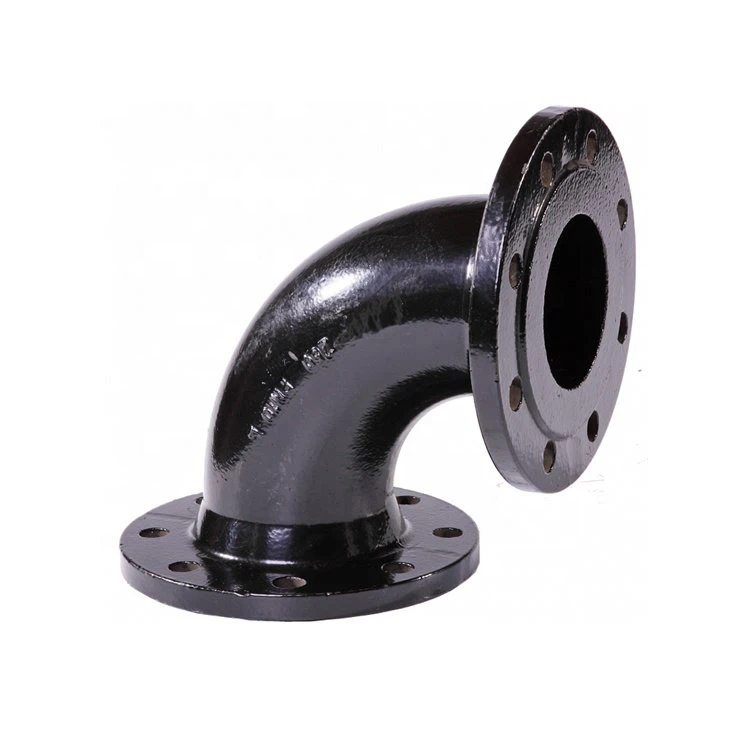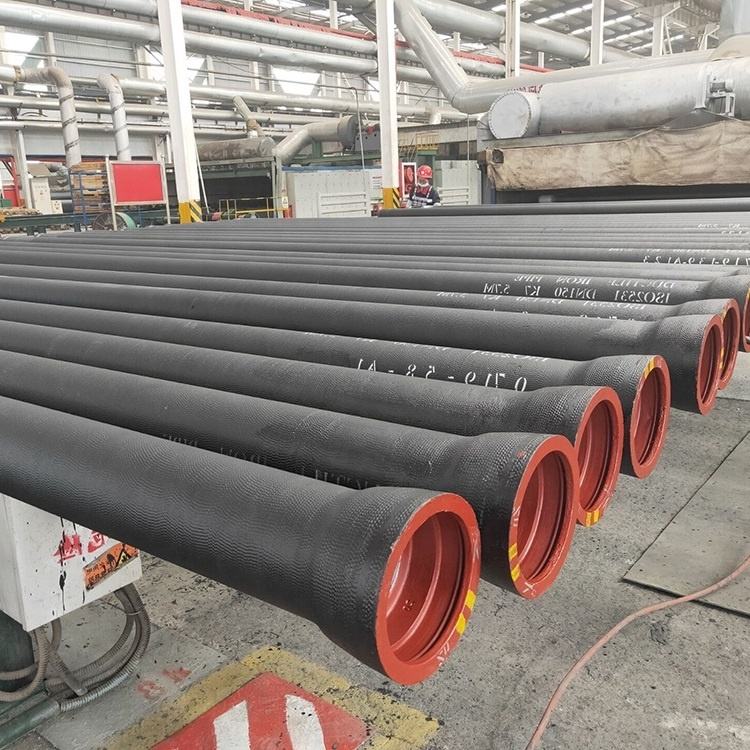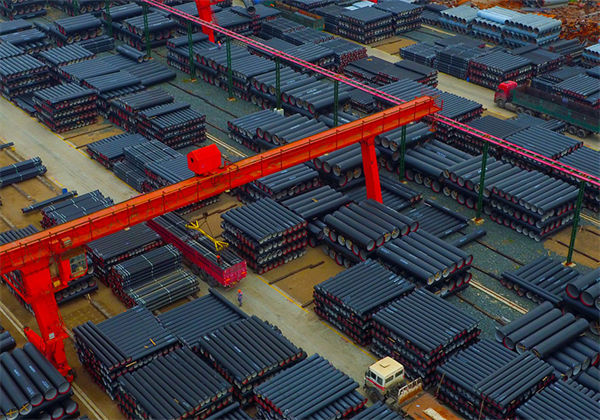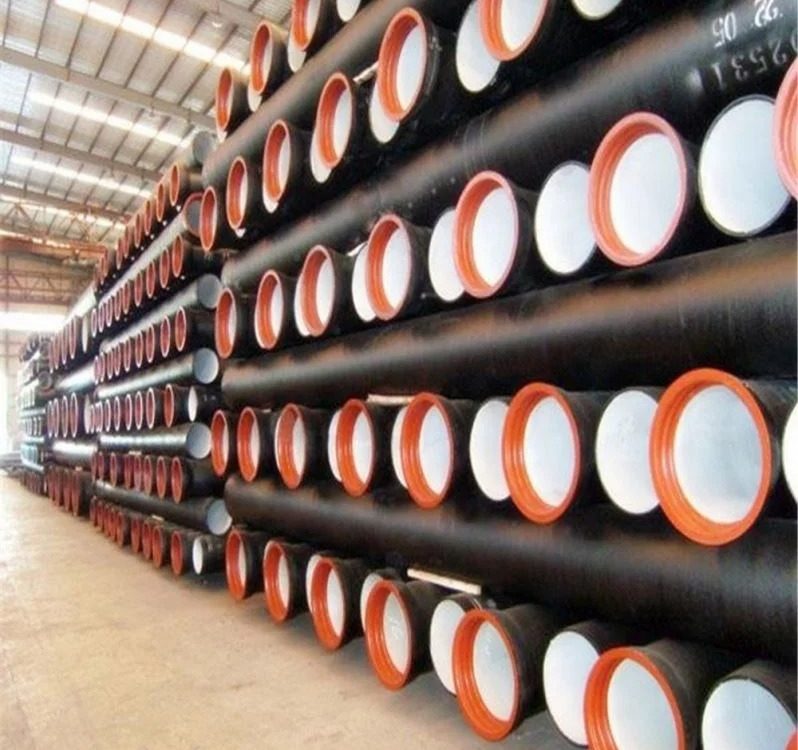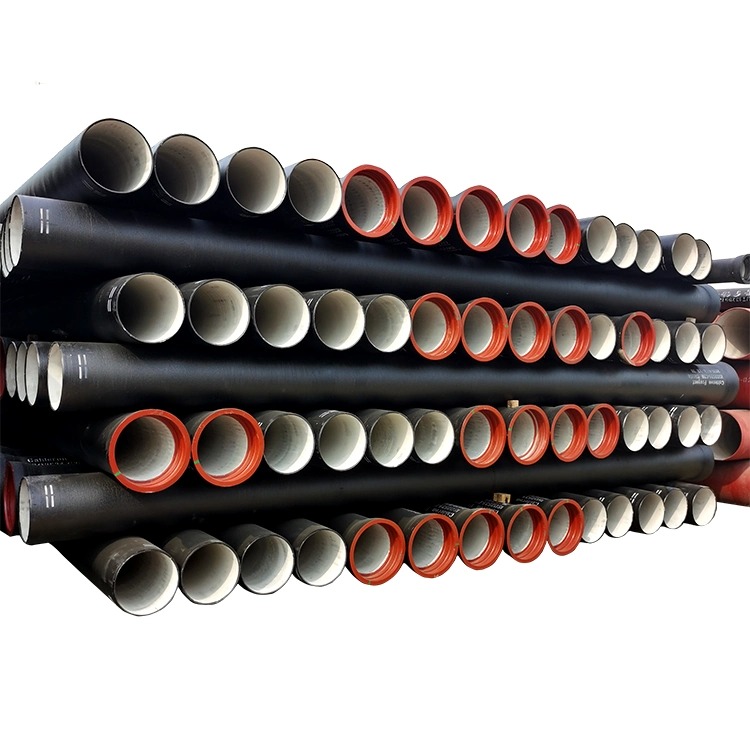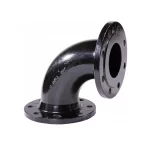
Raccords de tuyaux en fer ductile – Bend de fer ductile à rayon long
Mars 8, 2025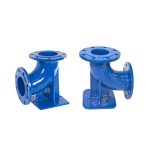
Bouche à double bride à 90 ° Duck Ductile Fer Bend
Mars 23, 2025Introduction au tuyau de fer ductile pour les eaux usées
Le tuyau en fer ductile est devenu un choix préféré pour les systèmes d'eaux usées en raison de sa résistance exceptionnelle, durabilité, et la résistance aux conditions difficiles posées par les eaux usées, effluents industriels, et les eaux pluviales. Contrairement aux systèmes d'eau potable, où la pureté est primordiale, Les applications d'eaux usées exigent des matériaux qui peuvent résister aux produits chimiques corrosifs, solides abrasifs, et fluctuant des pressions tout en maintenant l'intégrité structurelle au fil des décennies. Fon ductile - Une évolution moderne de la fonte avec du graphite nodulaire - excite dans ces environnements, offrant un robuste, Solution rentable pour les égouts municipaux, plantes de traitement, et des lignes de déchets industrielles. Cette discussion explore pourquoi le fer ductile est idéal pour les eaux usées, détaillant ses spécifications, applications, et les avantages de la performance.
Matériel: Fer ductile pour les eaux usées
Le fer ductile est un alliage de carbone de fer (2-4% carbone, 1-3% silicium) traité avec du magnésium (0.03-0.06%) pour transformer les flocons de graphite en nodules sphériques. Ce décalage microstructural accorde des propriétés mécaniques supérieures du fer ductile par rapport à la fonte grise traditionnelle:
-
Résistance à la traction: 60,000-120,000 psi, l'autoriser à gérer des pressions élevées et des charges externes.
-
Ductilité: 10-20% élongation, Permettre la flexibilité sous le stress sans craquer.
-
Dureté: Résiste à l'impact et à la fatigue, critique dans les environnements dynamiques des eaux usées.
Pour les eaux usées, Le fer ductile est naturel corrosion La résistance - en raison de sa base de fer formant une couche de protection d'oxyde - est un avantage clé. toutefois, Le fer ductile brut seul n'est pas suffisant contre la chimie agressive des eaux usées (par exemple., sulfure d'hydrogène, acides) ou des boues abrasives. Doublures et revêtements spécialisés, discuté plus tard, améliorer son aptitude, En faire un matériau polyvalent pour les égouts nourris à la gravité et la force (lignes d'eaux usées sous pression).
Caractéristiques de conception pour les eaux usées
Les tuyaux en fer ductile pour les eaux usées sont conçus pour relever des défis spécifiques:
-
Gamme dimensionnelle: DN80 à DN2600 (80 millimètre à 2,600 mm), couvrant les petits latéraux à de grands débuts.
-
Cours de pression: K7, K8, K9 (ISO 2531) ou c25, C30, C40 (FR 598), avec K9 et C40 commun pour la manipulation des secteur de force 50-40 bar (725-580 psi).
-
Longueur: Typiquement 6 mètres, souvent coupé à 5.7 mètres pour expédition, Assurer une installation efficace.
-
Épaisseur de paroi: Varie selon la classe (par exemple., K9 plus épais que K7), Équilibrer la force et le poids.
Ces fonctionnalités garantissent que le tuyau peut supporter des pressions internes, charges de sol externes, et la nature corrosive / abrasive des flux d'eaux usées.
Procédé de fabrication
La production de tuyaux de fer ductile pour les miroirs des eaux usées qui pour l'alimentation en eau, avec ajustements pour la durabilité:
-
Fusion: Fer, carbone, et le silicium est fondu à 2 500 à 2 800 ° F (1,370-1,540° C) dans un four.
-
Traitement en magnésium: Le fer en fusion est inoculé avec du magnésium pour former des nodules, Assurer la ductilité.
-
Casting centrifuge: Le fer traité est tourné dans des moules à tuyaux, Création de murs uniformes et un intérieur lisse.
-
L'indice de performance de l'acier est utilisé comme méthode de représentation de son code: Traitement thermique à 1 650 à 1 850 ° F (900-1,010° C) affine la microstructure, soulager les stress.
-
Doublure et revêtement: Doublures spécialisées (par exemple., polyuréthane) et revêtements (par exemple., zinc-époxy) sont appliqués pour lutter contre la corrosivité des eaux usées.
-
Corpac fournit des produits soudés et sans soudure: Les tuyaux sont testés (par exemple., Pression hydrostatique par EN 598) et préparé pour l'expédition.
Ce processus adhère aux normes comme en 598 (pour les eaux usées) et ISO 2531, Assurer la fiabilité.
Types conjoints pour les eaux usées
Les articulations des systèmes d'eaux usées doivent être étanches et adaptables au mouvement du sol ou aux surtensions de pression. Les types communs incluent:
-
Type T (Joint push-on): Rapide à installer, Convient aux égouts de gravité, avec joints en caoutchouc (par exemple., Nbr) Résister aux produits chimiques des eaux usées.
-
Type K (Articulation mécanique): Boulonné pour la sécurité, utilisé dans les plats principaux ou les sols instables, offrant une résistance à la poussée élevée.
-
Joint auto-restreint: Se verrouille contre le retrait, Idéal pour les lignes des eaux usées à haute pression sans blocs de poussée.
-
Articulation à bride: Rigide, Connexions boulonnées pour les stations de tuyauterie ou de pompe de l'usine de traitement.
|
Type conjoint
|
Force
|
La flexibilité
|
Utilisation des eaux usées
|
|---|---|---|---|
|
Type T (Push-on)
|
Modéré
|
Haute (5° max)
|
Égouts de gravité
|
|
Type K (Mécanique)
|
Haute
|
Modéré
|
Forcer les plats, sols instables
|
|
Autonome
|
Haute
|
Modéré
|
Lignes sous pression
|
|
À bride
|
Très haut
|
Aucun
|
Plantes de traitement
|
Doublures internes pour les eaux usées
La corrosivité des eaux usées - dirigée par du sulfure d'hydrogène (H₂s), sulfates, et les acides organiques - requise des doublures internes robustes:
-
Mortier de ciment Portland: Protection de base pour les eaux usées légères, mais moins efficace contre H₂s.
-
Mortier de ciment résistant aux sulfates: Résiste aux bactéries réductrices de sulfate, commun dans les eaux usées septiques.
-
Mortier de ciment à haut aluminium: Résiste aux effluents acides (pH < 4), Utilisé dans les eaux usées industrielles.
-
Résine époxy: Lisse, non-poreux, et résistant à la corrosion, Convient à une exposition chimique modérée.
-
Céramique époxy: Ajoute des particules de céramique pour la résistance à l'abrasion, Idéal pour les eaux usées granuleuses ou les boues.
-
UNITÉ CENTRALE (Polyuréthane): Très durable contre H₂s, acides, et abrasion, l'étalon-or pour les eaux usées graves.
|
Type de doublure
|
Avantage clé
|
Application des eaux usées
|
|---|---|---|
|
Ciment Portland
|
Corrosion de base
|
Eaux usées légères
|
|
Ciment résistant aux sulfates
|
Résistance au sulfate
|
Eaux usées septiques
|
|
Ciment élevé en aluminium
|
Résistance aux acides
|
Effluents industriels
|
|
Résine époxy
|
Lisse, durable
|
Exposition chimique modérée
|
|
Céramique époxy
|
Résistance à l'abrasion
|
Eaux usées granuleuses, boucler
|
|
UNITÉ CENTRALE (Polyuréthane)
|
Chimique / abrasion
|
Eaux usées graves
|
Les doublures en céramique PU et époxy sont de plus en plus populaires pour leur longévité dans des conditions agressives.
Revêtements externes
Les revêtements externes protègent contre la corrosion du sol, surtout dans les environnements humides ou acides:
-
Zinc + Bitume: Norme (130-200 g / m² zinc), Offrir une protection galvanique et une barrière d'humidité.
-
Zinc-époxy: Résistance accrue à la corrosion pour les sols agressifs (par exemple., zones côtières).
-
UNITÉ CENTRALE (Polyuréthane): Flexible et dur, Résister à l'attaque chimique et aux dommages mécaniques.
-
FBE (Époxy à la fusion): Épais, revêtement uniforme pour la durabilité à long terme.
-
Époxy-néramique: Combine la corrosion et la résistance à l'abrasion pour les sols rocheux ou salins.
|
Type de revêtement
|
Protection
|
Type de sol
|
|---|---|---|
|
Zinc + Bitume
|
Corrosion de base
|
Sols standard
|
|
Zinc-époxy
|
Corrosion améliorée
|
Sols agressifs
|
|
UNITÉ CENTRALE
|
La flexibilité, corrosion
|
Zones côtières / humides
|
|
FBE
|
Durabilité à long terme
|
Zones à corrosion élevée
|
|
Époxy-néramique
|
Corrosion + abrasion
|
Sols rocheux / salins
|
Joints en caoutchouc
Les joints assurent l'intégrité conjointe, avec des matériaux par ISO 4633:
-
Nbr (Caoutchouc nitrile butadiène): Huile- et résistant aux produits chimiques, Idéal pour les eaux usées avec des hydrocarbures.
-
SBR (Caoutchouc de styrène butadiène): Rentable pour les eaux usées légères.
-
EPDM (Monomère de diène éthylène propylène): Résiste à l'altération et aux produits chimiques, Convient à une exposition à long terme.
|
Type de joint
|
Propriété clé
|
Utilisation des eaux usées
|
|---|---|---|
|
Nbr
|
Huile / résistance chimique
|
Eaux usées industrielles
|
|
SBR
|
Durabilité générale
|
Eaux usées légères
|
|
EPDM
|
Météo / produits chimiques
|
Égouts à long terme
|
Applications dans les systèmes d'eaux usées
Les tuyaux en fer ductile répondent aux besoins en eaux usées:
-
Eaux usées municipales: Égouts de gravité (DN200-DN600) et forcer les plats (DN80-DN300) transporter les déchets domestiques vers les usines de traitement.
-
Effluents industriels: Gère les décharges corrosives ou abrasives (par exemple., des plantes chimiques ou des mines).
-
Eaux pluviales: Tuyaux de grand diamètre (DN800-DN2600) gérer le ruissellement, Résister aux charges et débris du sol.
-
Plantes de traitement: Pipes à bride route les eaux usées traitées dans les installations.
-
Systèmes combinés: Perche aux eaux usées mixtes et aux eaux pluviales dans les zones urbaines.
|
Application
|
Gamme dimensionnelle
|
Exigence clé
|
|---|---|---|
|
Eaux usées municipales
|
DN200-DN600
|
Résistance à la corrosion
|
|
Effluents industriels
|
DN80-DN300
|
Chimique / abrasion
|
|
Eaux pluviales
|
DN800-DN2600
|
Capacité de chargement
|
|
Plantes de traitement
|
DN100-DN500
|
Manipulation de la pression
|
|
Systèmes combinés
|
DN300-DN1000
|
Polyvalence
|
Avantages pour les eaux usées
-
Résistance à la corrosion: Amélioré par des doublures / revêtements, résiste aux H₂s et aux acides.
-
Force: Soutient les enterrements profonds (10-20 mètres) et les charges de trafic.
-
Ductilité: Flexion dans les sols changeants ou les zones sismiques, Réduire les pauses.
-
Résistance à l'abrasion: Les doublures en céramique ou en PU endurent les flux granuleux.
-
Longévité: 50-100 années avec une protection appropriée, Réduction des coûts de remplacement.
-
Capacité de pression: Handles Force des plats 50 bar, Contrairement au PVC ou au HDPE dans certains cas.
Défis et considérations
-
Sulfure d'hydrogène (H₂s): Les eaux usées génèrent du gaz H₂s, qui forme de l'acide sulfurique dans des conditions humides. Les doublures PU ou en aluminium élevé sont essentielles pour lutter contre cela.
-
Abrasion: Solides dans les eaux usées (par exemple., sable, gravier) doublures; époxy-céramique ou PU atténue cela.
-
Coût: Coût initial plus élevé que le PVC, Bien que les économies de cycle de vie le justifient.
-
Poids: Alternatives plus lourdes que en plastique, nécessitant plus d'efforts d'installation.
Chimie des eaux usées
Les eaux usées ne sont pas seulement l'eau - c'est un infusion de déchets biologiques, les bactéries, et produits chimiques. Dans des conditions anaérobies, Les bactéries réductrices de sulfate produisent des H₂s, qui corrode le fer non traité 10-20 années. Un tuyau de fer ductile DN300 avec une doublure PU dans un égout à Los Angeles a duré 40 années sans échec, tandis qu'un tuyau en fonte non doublé à proximité s'est éteint dans 15.
Forcer la dynamique principale
Dans une force principale de pompage 200 psi, Un tuyau de fer ductile K9 avec un joint contenu tient régulièrement là où le HDPE pourrait se déformer. Pendant 2019 Inondation à Houston, Les plats ductiles en fer de fer sont restés intacts pendant que les lignes en plastique se sont bouclées, prouver sa résilience.
Réalités d'installation
Poser un égout DN600 dans un sol en argile prend un équipage qualifié - les pointes de 6 mètres hissent des longueurs, Et les joints poussoirs se cassent en quelques minutes. En terrain rocheux, Un revêtement époxy-céramique hausse les épaules des rayures qui rouilleraient en acier.
Valeur économique
Un tuyau DN400 K9 pourrait coûter $30 per meter versus $20 pour PVC, Mais la vie de 30 ans du PVC pâlit contre le fer ductile 75+. Dans un égout de 10 kilomètres, c'est $100,000 sauvé dans les remplacements sur un siècle.
Bord environnemental
La recyclabilité du fer ductile et la longue durée de vie réduisent les déchets. Une usine de traitement en Ontario a échangé de l'acier corrodé contre du fer ductile en 2005, coupe des émissions d'entretien par 25% plus de 20 années.
Conclusion
Le tuyau de fer ductile pour les eaux usées est un robuste, solution adaptable, Excellent là où la corrosion, pression, et le test d'abrasion des matériaux moindres. De son noyau de fer nodulaire à ses revêtements PU et aux revêtements zinc-époxy, Il est conçu pour supporter les flux les plus méchants - le temps, déchets industriels, ou les eaux pluviales - pendant des décennies. Que ce soit la canalisation des effluents via un DN200 Force Main ou vider une ville via un émissaire DN1200, sa force et sa longévité le rendent indispensable.

